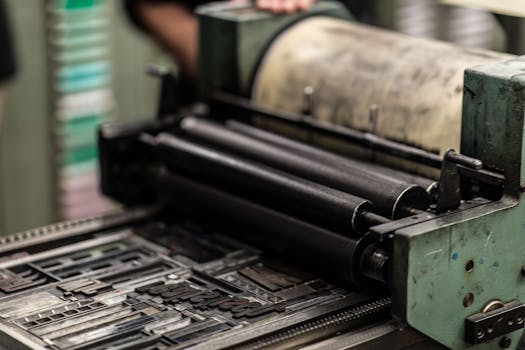3D Printing in Business: Revolutionizing Rapid Prototyping and Customization
In recent years, 3D printing has emerged as a transformative technology in the business landscape, enabling companies to create rapid prototypes and customized products with unprecedented efficiency and precision. This article explores how businesses can leverage 3D printing to enhance their operations, reduce costs, and meet the growing demand for personalized products.
The Rise of 3D Printing Technology
3D printing, also known as additive manufacturing, involves creating three-dimensional objects from digital files by layering materials. This technology has evolved significantly since its inception in the 1980s, with advancements in materials, printing techniques, and software. According to a report by Wohlers Associates, the global 3D printing market was valued at approximately $12.6 billion in 2020 and is projected to reach $34.8 billion by 2026, reflecting a compound annual growth rate (CAGR) of 18.0%.
Benefits of 3D Printing for Rapid Prototyping
One of the most significant advantages of 3D printing is its ability to facilitate rapid prototyping. This process allows businesses to quickly create physical models of their designs, enabling them to test and iterate on their products before full-scale production. Here are some key benefits:
- Speed: Traditional prototyping methods can take weeks or even months. 3D printing can produce prototypes in a matter of hours, significantly accelerating the product development cycle.
- Cost-Effectiveness: Reducing the time and materials needed for prototyping lowers costs. Businesses can save on labor and material expenses, making it feasible to explore multiple design iterations.
- Design Flexibility: 3D printing allows for complex geometries and intricate designs that would be difficult or impossible to achieve with traditional manufacturing methods.
Case Study: Ford Motor Company
Ford Motor Company is a prime example of a business successfully utilizing 3D printing for rapid prototyping. The company has integrated 3D printing into its product development process, allowing engineers to create prototypes of parts and components quickly. This approach has enabled Ford to reduce the time it takes to bring new vehicles to market, enhancing their competitive edge in the automotive industry.
Customization: Meeting Consumer Demands
As consumer preferences shift towards personalized products, 3D printing offers businesses the ability to create customized solutions tailored to individual needs. This capability is particularly valuable in industries such as fashion, healthcare, and consumer goods. Here are some examples of how businesses are leveraging 3D printing for customization:
- Healthcare: Companies like Align Technology use 3D printing to create custom dental aligners that fit each patient’s unique dental structure, improving treatment outcomes.
- Fashion: Brands like Adidas have introduced 3D-printed shoes that can be customized for fit and style, allowing consumers to express their individuality.
- Consumer Goods: Companies like Shapeways enable customers to design and order personalized products, from jewelry to home decor, using 3D printing technology.
Challenges and Considerations
While the benefits of 3D printing are substantial, businesses must also consider several challenges:
- Material Limitations: Not all materials are suitable for 3D printing, and the range of available materials may limit design options.
- Quality Control: Ensuring consistent quality across printed products can be challenging, particularly for complex designs.
- Intellectual Property Concerns: The ease of replicating designs raises concerns about intellectual property theft and the protection of proprietary designs.
Conclusion: Embracing the Future of Manufacturing
3D printing is revolutionizing the way businesses approach product development and customization. By enabling rapid prototyping and personalized products, this technology offers significant advantages in speed, cost, and design flexibility. As companies like Ford and Align Technology demonstrate, integrating 3D printing into business operations can lead to enhanced innovation and competitiveness.
However, businesses must also navigate the challenges associated with this technology, including material limitations and quality control. By addressing these issues and embracing the potential of 3D printing, companies can position themselves at the forefront of the manufacturing revolution, ready to meet the demands of an increasingly personalized market.
